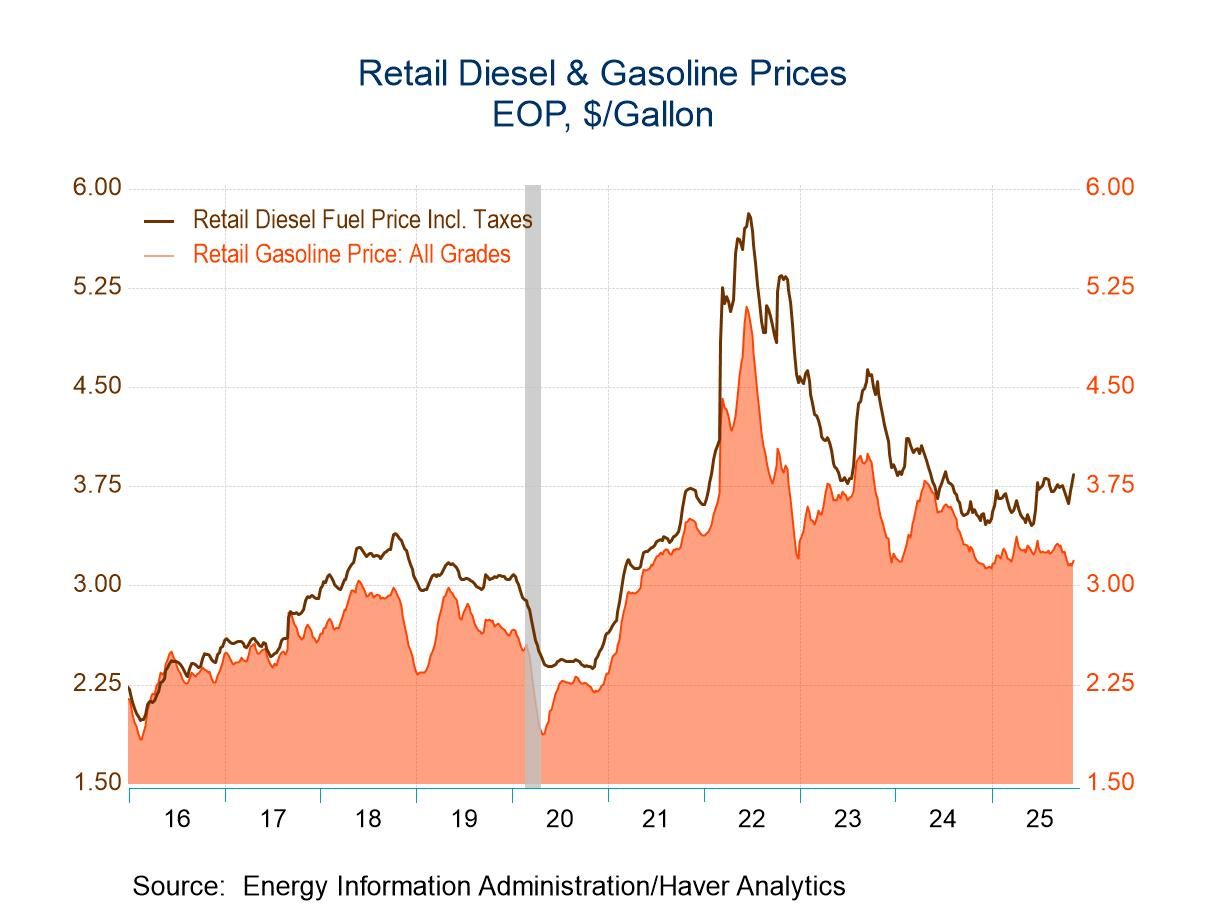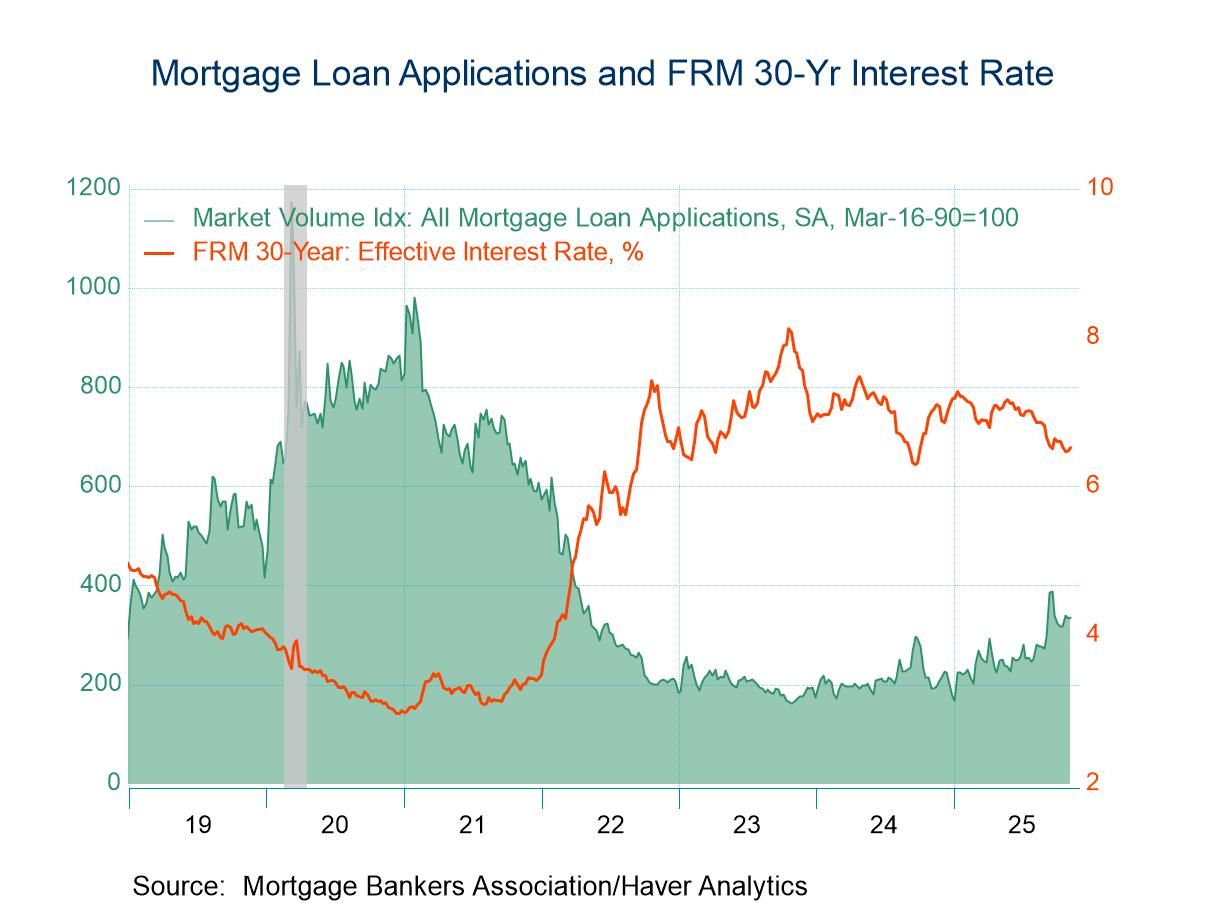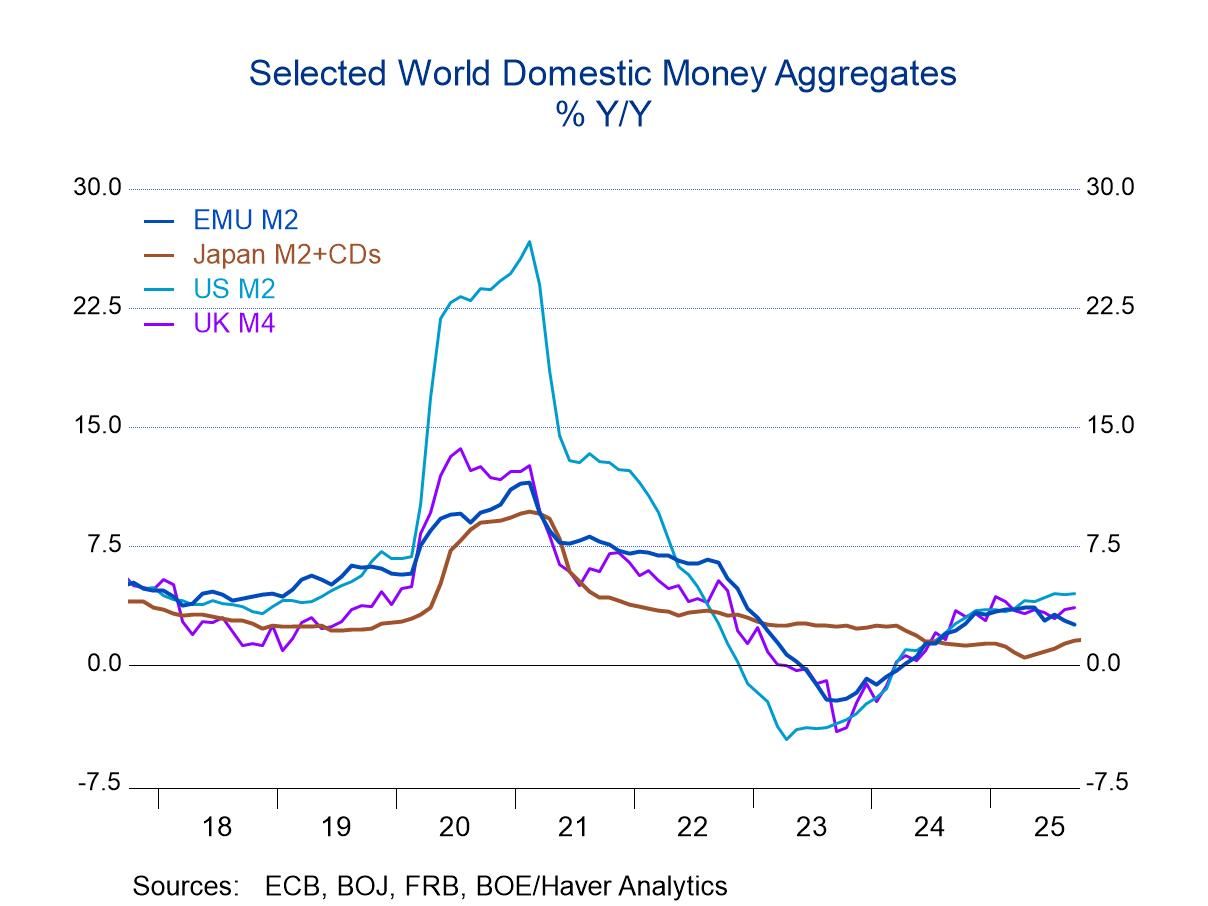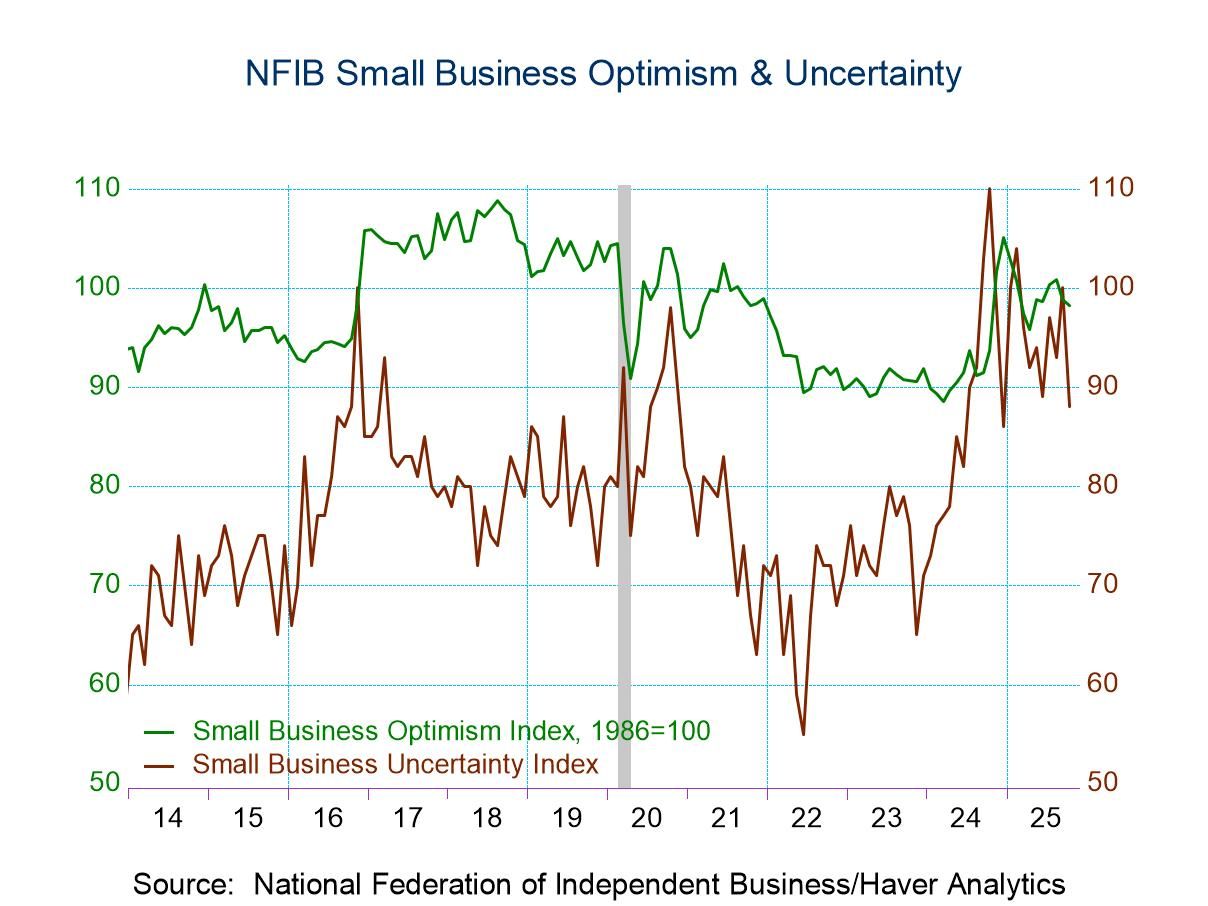U.S. GDP Growth Strengthens in Q2
by:Tom Moeller
|in:Economy in Brief
Summary
- Growth led by business investment; consumer spending growth cools.
- Inventories & foreign trade little changed.
- Price gains moderate.


Real GDP grew 2.4% (SAAR) during Q2’23 following a 2.0% rise in Q1. The gain marks the fourth consecutive quarter of growth. GDP grew 2.6% y/y, the strongest four quarter advance since Q1’22. A 1.9% gain for Q2 was expected in the Action Economics Forecast Survey.
The change in business inventories added 0.14 percentage point to GDP growth last quarter following a 2.14 point subtraction in Q1. The foreign trade deficit subtracted 0.12 percentage point following a 0.58 point addition in Q1. Exports fell 10.8% (+1.5% y/y) after rising 7.8% while imports declined 7.8% (-4.8% y/y) following 2.0% growth in Q1.
Final sales to domestic purchasers grew 2.3% in Q2 (2.0% y/y) following a 3.5% gain in the previous quarter. Consumer spending growth slowed to 1.6% (2.3% y/y) from 4.2%. Durable goods outlays edged 0.4% higher, as motor vehicle buying fell 7.6% (+5.2% y/y). Furniture & appliance outlays rose 1.2% (1.3% y/y) while spending on recreational products jumped 10.0% (5.4% y/y). Purchases of nondurable goods rose 0.9% (0.5% y/y) as spending on gasoline & oil jumped 13.1% (3.4% y/y) but food & beverage outlays fell 0.3% (-1.2% y/y). Clothing outlays declined 6.0% (-0.6% y/y). Spending on services rose 2.1% (2.6% y/y) as transportation services outlays jumped 9.8% (1.5% y/y) following three straight quarters of decline. Housing & utilities outlays rose 3.2% (1.1% y/y) and expenditures on health care gained 2.8% (6.2% y/y). Recreation spending rose 1.7% (4.0% y/y), but outlays at hotels & restaurants fell 2.9% (+2.2% y/y).


Nonresidential fixed investment strengthened 7.7% (4.6% y/y) after improving 0.6% in Q1. Nonresidential structures strengthened 9.7% (9.1% y/y), while equipment investment increased 10.8% (1.9% y/y). Transportation equipment investment surged 55.7% (30.9% y/y). Information processing equipment outlays rose 1.4% (-5.7% y/y) but outlays on industrial equipment fell 2.7% (-1.2% y/y). Intellectual property product spending improved 3.9% (5.0% y/y), about the same as in Q1.
Showing continued weakness last quarter was residential investment which fell 4.1% (-15.8% y/y). That was about the same shortfall in Q1 and the ninth consecutive quarterly decline.
Government purchases of goods and services increased 2.6% (3.8% y/y) after a 5.0% surge in Q1. Federal government purchases grew 0.9% (4.1% y/y) after two straight gains near 6% while state and local government purchases grew 3.6% both q/q and y/y.
There was less inflation in Q2. The GDP price index increased 2.2% following a 4.1% Q1 gain. It was the weakest rise in three years and lowered the y/y gain to 3.6%, down from its 7.6% high in Q2 2022. The Action Economics Forecast Survey expected a 3.0% rise. The PCE chain price index rose 2.6% (3.7% y/y) following a 4.1% rise. The PCE price index less food and energy rose 3.8% (4.4% y/y) following a 4.9% increase. Prices for nonresidential fixed investment rose just 1.2% (4.8% y/y) after a 7.2% gain. Residential investment prices eased 0.7% (+2.4% y/y) after falling 2.5%.
The GDP data can be found in Haver's USECON and USNA databases. USNA contains virtually all of the Bureau of Economic Analysis detail in the national accounts. Both databases include tables of the newly published not seasonally adjusted data. The Action Economics consensus estimates can be found in AS1REPNA.


Tom Moeller
AuthorMore in Author Profile »Prior to joining Haver Analytics in 2000, Mr. Moeller worked as the Economist at Chancellor Capital Management from 1985 to 1999. There, he developed comprehensive economic forecasts and interpreted economic data for equity and fixed income portfolio managers. Also at Chancellor, Mr. Moeller worked as an equity analyst and was responsible for researching and rating companies in the economically sensitive automobile and housing industries for investment in Chancellor’s equity portfolio. Prior to joining Chancellor, Mr. Moeller was an Economist at Citibank from 1979 to 1984. He also analyzed pricing behavior in the metals industry for the Council on Wage and Price Stability in Washington, D.C. In 1999, Mr. Moeller received the award for most accurate forecast from the Forecasters' Club of New York. From 1990 to 1992 he was President of the New York Association for Business Economists. Mr. Moeller earned an M.B.A. in Finance from Fordham University, where he graduated in 1987. He holds a Bachelor of Arts in Economics from George Washington University.






 Global
Global